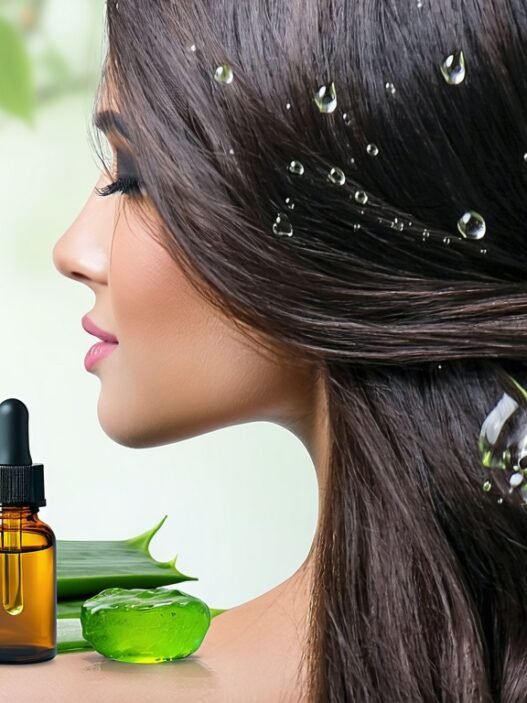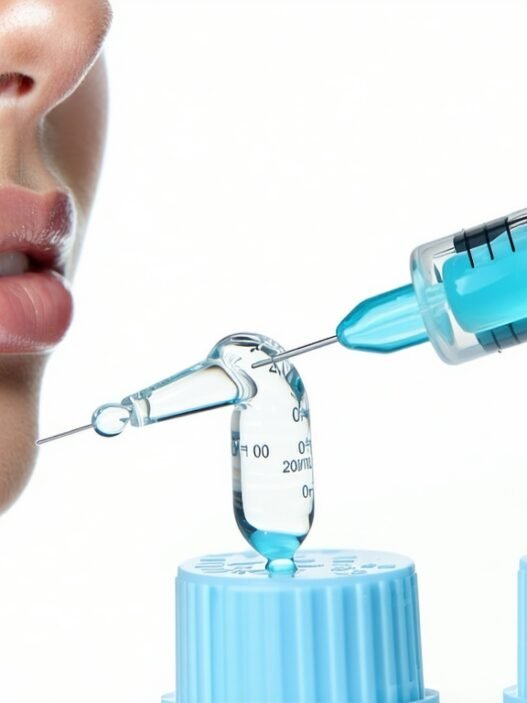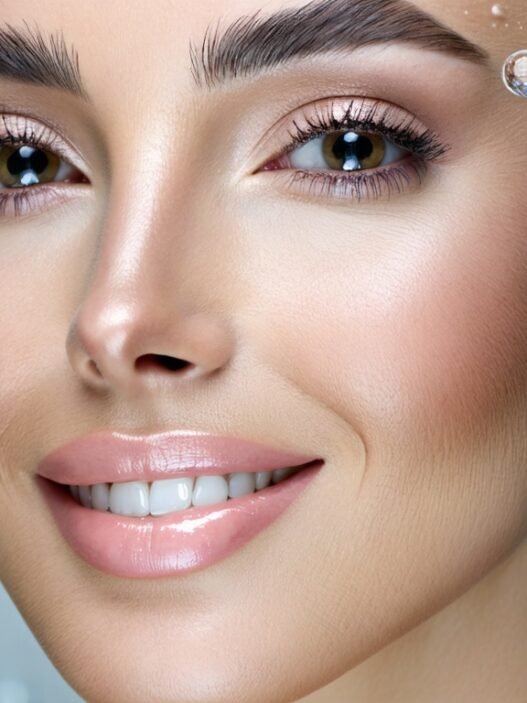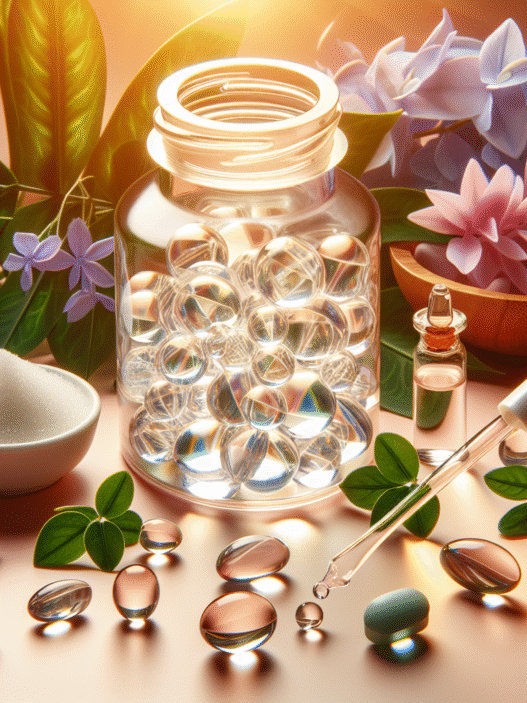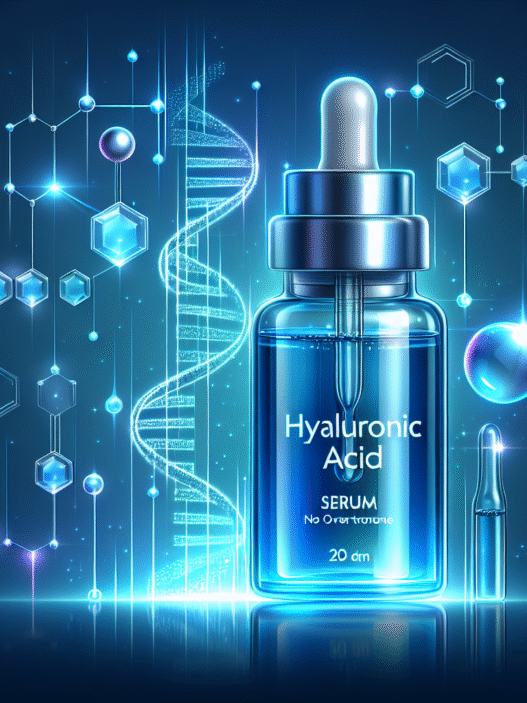Understanding Hyaluronic Acid and Retinol
In the realm of skincare, hyaluronic acid and retinol are two highly regarded ingredients that offer a multitude of benefits. Understanding how each component functions can help beauty enthusiasts make informed choices about their skincare routines.
Benefits of Hyaluronic Acid
Hyaluronic acid is a powerful humectant, renowned for its ability to attract and retain water in the skin. This hydrating ingredient plays several key roles in skincare:
- Moisturization: It helps to keep the skin hydrated, creating a plump and smooth appearance.
- Wrinkle Reduction: By providing ample moisture, hyaluronic acid can reduce the visibility of fine lines and wrinkles. Research indicates that it temporarily improves the look and feel of the skin (Byrdie).
- Wound Healing: Hyaluronic acid speeds up the wound healing process and can soothe irritated skin.
| Benefit | Description |
|---|---|
| Hydration | Attracts water to the skin, providing essential moisture. |
| Wrinkle Reduction | Reduces the appearance of fine lines and creates a smooth complexion. |
| Speeding Wound Healing | Aids in the healing process of the skin, promoting recovery. |
Hyaluronic acid is generally safe for all skin types and has no known adverse effects when used topically. For more detailed information on its effects, visit what does hyaluronic acid do to your skin?.
Benefits of Retinol
Retinol, a derivative of vitamin A, is celebrated for its powerful skin-resurfacing properties. It offers an array of benefits suitable for individuals across various age groups:
- Skin Cell Turnover: Retinol encourages rapid skin cell renewal, which helps to refresh the skin and can improve overall texture.
- Collagen Production: It stimulates collagen and elastin production, contributing to firmer and more youthful-looking skin.
- Breakout Control: Retinol helps keep pores open, reducing the likelihood of breakouts.
- Treatment of Aging Signs: It can reverse signs of sun damage, smoothen texture, and fade pigmentation, resulting in a more even skin tone.
| Benefit | Description |
|---|---|
| Skin Cell Turnover | Promotes faster skin rejuvenation, enhancing texture and appearance. |
| Increased Collagen Production | Supports skin firmness and elasticity, combating sagging and wrinkles. |
| Improved Acne Management | Keeps pores unclogged, helping to prevent and reduce breakouts. |
| Sun Damage Reversal | Works to reduce sun spots and signs of aging through enhanced collagen production. |
By understanding the individual benefits of both hyaluronic acid and retinol, skincare enthusiasts can better appreciate how these ingredients contribute to an effective anti-aging skincare routine. The next section will delve into the compatibility of these two components.
Combining Hyaluronic Acid and Retinol
When considering the combination of hyaluronic acid and retinol, beauty and skincare enthusiasts often wonder about the safety and effectiveness of this pairing. Understanding how to use these two powerful ingredients together can maximize skincare benefits.
Safe Usage Guidelines
To safely combine hyaluronic acid and retinol, individuals should follow essential guidelines. Starting with lower concentrations, particularly for retinol, can help minimize potential irritation that may arise from its use. Here are some key points to consider:
- Start Slow: Begin by using retinol once or twice a week, gradually increasing frequency as the skin adjusts.
- Layering Order: Apply hyaluronic acid after retinol. This helps hydrate the skin and counteracts retinol’s drying effects.
- Patch Test: Before full application, perform a patch test to check for any adverse reactions.
- Hydration: Ensure to use moisturizer after applying hyaluronic acid for added skin hydration.
| Step | Product | Frequency | Notes |
|---|---|---|---|
| 1 | Retinol | 1-2 times a week | Gradually increase usage |
| 2 | Hyaluronic Acid | Daily | Apply after retinol |
| 3 | Moisturizer | Daily | Use for extra hydration |
For more information regarding what should not be mixed with hyaluronic acid, refer to our article on what not to mix with hyaluronic acid?.
Synergistic Effects
Combining hyaluronic acid and retinol can lead to positive synergistic effects that enhance their individual benefits. Hyaluronic acid acts as a powerful humectant, attracting moisture to the skin, while retinol promotes cell turnover and collagen production. The combination works effectively to:
- Hydrate the skin deeply while combating signs of aging.
- Reduce the appearance of fine lines and wrinkles.
- Improve overall skin texture and tone.
Research has indicated that the use of hyaluronic acid can help offset retinol’s potential drying effects, making the regimen more manageable for sensitive skin types. Additionally, this combination can be an integral part of anti-aging routines, as both ingredients support youthful and radiant skin.
For more insights on the benefits of hyaluronic acid, visit our article on what does hyaluronic acid do to your skin?.
Hyaluronic Acid in Skincare
Hyaluronic acid is a popular ingredient in skincare routines for its impressive hydrating properties. This section explores its topical application and the use of oral supplements.
Topical Application
Topical application of hyaluronic acid is widely embraced for its moisturizing benefits. This ingredient can bind up to 1000 times its weight in water, acting as a humectant that holds water molecules on the skin’s surface to keep it hydrated (Healthline). It is available in various formulations, including serums, creams, and eye care products.
| Product Type | Benefits | Absorption Level |
|---|---|---|
| Serums | Deep hydration | High |
| Creams | Moisture sealing | Moderate |
| Eye Care Products | Reduces puffiness | High |
Over-the-counter hyaluronic acid serums are considered safe for most skin types, offering a boost in hydration while enhancing skin elasticity and minimizing the appearance of wrinkles (Cleveland Clinic). For optimal effectiveness, it is important to choose products with a molecular weight between 50 to 1,000 kDa, as studies show that 130 kDa HA significantly improves skin elasticity and reduces wrinkle depth (Healthline).
Oral Supplements
In addition to topical applications, hyaluronic acid supplements are available and are also deemed safe for consumption. However, individuals should inform their healthcare providers about any such supplements they are taking. Supplements may also offer benefits such as joint lubrication and improved skin hydration from within.
| Supplement Type | Benefits | Recommended Daily Intake |
|---|---|---|
| Capsules | Joint support, skin hydration | Consult a healthcare provider |
| Powders | Enhances hydration | Consult a healthcare provider |
When considering hyaluronic acid supplements, it’s essential to be cautious of the dosage and ensure a reliable source, as the concentration and molecular weight can impact their effectiveness. Balancing topical and oral forms of hyaluronic acid can enhance overall skin health.
For further insight into the benefits of hyaluronic acid, check out articles on what does hyaluronic acid do to your skin? and does hyaluronic acid help wrinkles?.
Retinol in Skincare
Retinol is a powerful ingredient known for its numerous benefits in skincare. It is a topical form of vitamin A that promotes skin-cell turnover, stimulates collagen and elastin production, and helps keep pores unclogged, improving the appearance of acne. Understanding how to correctly apply retinol and being aware of its potential side effects are important for effective use.
Application Methods
Applying retinol properly can significantly affect its efficacy and skin tolerance. Here are some recommended methods for application:
-
Cleanse Your Skin: Start with a gentle cleanser to remove any dirt and oil from the skin surface.
-
Pat Dry: After washing, gently pat the skin dry with a clean towel. Allow it to dry completely before applying retinol to reduce sensitivity.
-
Apply Retinol: Use a pea-sized amount of retinol on the face, avoiding the eye area. Spread it evenly over the skin.
-
Moisturize: Follow with a moisturizer to help hydrate the skin and minimize potential irritation.
-
Frequency: Beginners should start using retinol every other night or every third night. Gradually increase to nightly use as the skin adjusts (Healthline).
| Step | Method |
|---|---|
| 1 | Cleanse skin |
| 2 | Pat dry |
| 3 | Apply retinol |
| 4 | Moisturize |
| 5 | Increase frequency gradually |
Use a gentle cleanser and follow up with a moisturizer to enhance the effectiveness of the retinol and decrease irritation.
Side Effects
While retinol has several skincare benefits, it can also cause side effects. Common reactions include:
- Dryness
- Irritation
- Redness
- Flaking skin
Severe side effects, such as extreme redness, blistering, or peeling, are experienced by less than 10% of users (Healthline). To minimize these adverse effects, the following recommendations may help:
- Start with a low concentration of retinol.
- Gradually increase the frequency of use.
- Apply retinol at least 30 minutes after washing the face to allow for some drying before application.
Consulting a dermatologist is advisable, especially if someone experiences severe side effects. For further guidance on combining ingredients, check out our articles about what not to mix with hyaluronic acid? and what happens if you use too much hyaluronic acid on your face?. Understanding application methods and potential reactions can greatly enhance the benefits of retinol in a skincare routine.
Optimal Skincare Routine
Establishing an effective skincare routine is essential for maximizing the benefits of hyaluronic acid and retinol. Understanding the correct order of application and selecting suitable products can significantly enhance results.
Active Ingredients Order
For optimal benefits, it is recommended to apply retinol before hyaluronic acid. This sequence allows the retinol to penetrate more deeply into the pores, ensuring its effectiveness. Following a precise skincare routine when combining these products is crucial for the best results (Skin Pharm).
| Step | Product Type | Application Order |
|---|---|---|
| 1 | Cleanser | First, cleanse the face. |
| 2 | Retinol | Apply retinol and allow it to absorb. |
| 3 | Hyaluronic Acid | Follow with hyaluronic acid for hydration. |
| 4 | Moisturizer | Seal everything in with a moisturizer. |
Recommended Products
Incorporating effective products into a skincare routine can enhance the synergy between hyaluronic acid and retinol. Suggestions include:
- Youth Serum – Contains hyaluronic acid to hydrate and plump the skin.
- Night Watch Gentle Retinol Drops – Provides gentle retinol for rejuvenation without irritation.
Several skincare products contain different forms of hyaluronic acid to maximize its effectiveness. Notable options include:
| Product Name | Description |
|---|---|
| Hada Labo Hyaluronic Acid Lotion | A lightweight lotion with multiple layers of hyaluronic acid. |
| Hada Labo Premium Lotion | Offers a rich formulation to deeply hydrate the skin. |
| The Ordinary’s Hyaluronic Acid 2% + B5 | Combines hyaluronic acid with vitamin B5 for added skin benefits (Healthline). |
Selecting the right combination of products and properly timing their application can greatly enhance the overall effectiveness of a skincare routine. For further details on the effects of hyaluronic acid on the skin, refer to our article on what does hyaluronic acid do to your skin?.
Maximizing Skincare Benefits
Youthful Skin Regimen
To maximize the benefits of both hyaluronic acid and retinol in a skincare routine, a structured regimen is essential. As both ingredients are acclaimed for their anti-aging properties, using them together can significantly enhance the skin’s health and appearance. Doctors recommend that these two components be incorporated into daily skincare habits.
| Step | Product Type | Application Tips |
|---|---|---|
| 1 | Cleanser | Start with a gentle cleanser to remove impurities. |
| 2 | Retinol | Apply retinol to clean, dry skin to allow it to penetrate effectively. |
| 3 | Hyaluronic Acid | Follow up with a hyaluronic acid serum or moisturizer to lock in hydration. |
This sequence ensures that retinol can effectively work on improving skin tone, texture, and elasticity, while hyaluronic acid helps to combat any potential dryness or irritation that retinol may cause. Including these steps can lead to noticeable improvements in fine lines and wrinkles.
Achieving Radiant Skin
Achieving radiant skin with the combination of hyaluronic acid and retinol is not only possible but recommended. The synergy between these ingredients enhances skin hydration and promotes cell turnover.
-
Improving Appearance: The duo can help minimize pores, smooth lines, and clear breakouts. When applied together, they create a balanced effect, making them suitable for various skin types, including sensitive skin (Byrdie).
-
Layering Products: For individuals with oily or acne-prone skin, it is advised to apply retinol directly onto clean skin, followed by a serum or cream containing hyaluronic acid. This layering technique secures the full benefits of retinol while ensuring hydration from hyaluronic acid (Cosmopolitan).
Incorporating these steps and utilizing both ingredients effectively can lead to a noticeable transformation, fostering youthful and radiant skin. For further insights into the benefits of hyaluronic acid, check our article on what does hyaluronic acid do to your skin?.
















